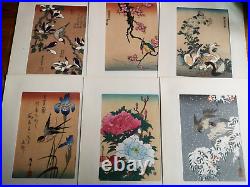
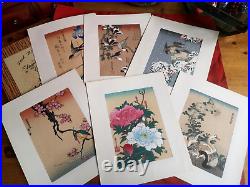
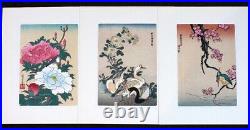
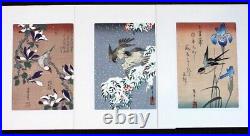
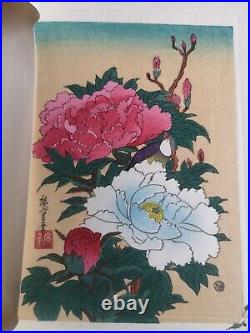
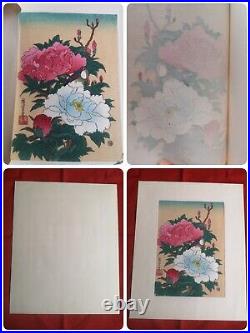
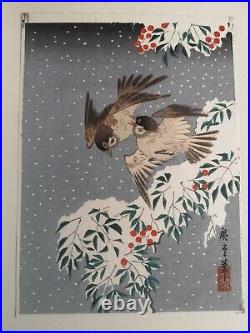
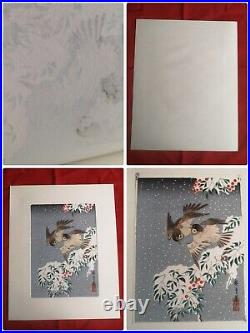
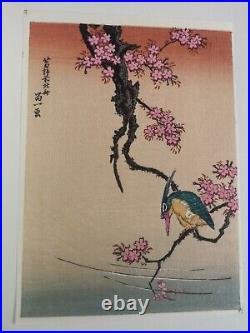
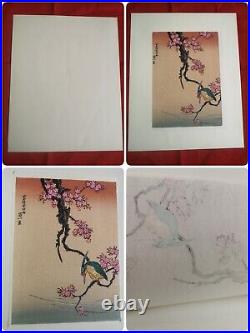


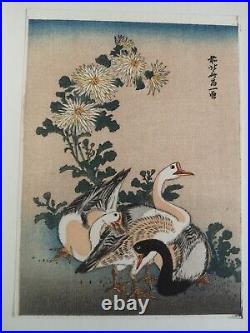

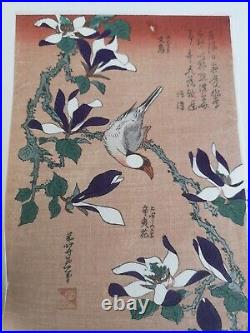

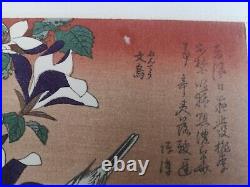


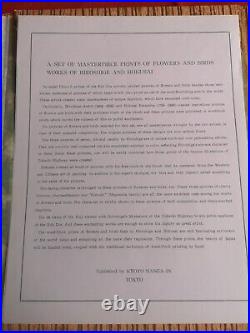
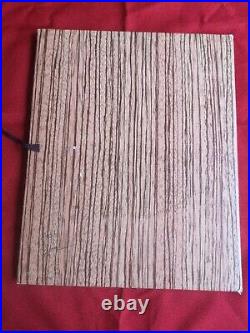
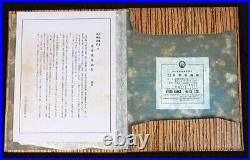


Japanese Art Woodblock Print. Each of Hiroshige’s three works of peonies, irises, and nandina radiates a unique charm and beauty, and is characterized by calm and elegant colors that reflect his sincere personality. These truly represent his outstanding contribution to the Fifty-three Stations of the Tokaido series. On the other hand, Hokusai, known for his numerous masterpieces, displayed a bold and powerful style in his flower and bird paintings. Each flower, such as cherry blossoms, chrysanthemums, and magnolias, is beautifully depicted with bold compositions and sharp brushstrokes. Despite their contrasting characters and artistic approaches, Hiroshige and Hokusai’s woodblock prints of flowers and birds have fascinated people around the world and are an important part of traditional Japanese art. Product form: Set of 6 woodblock prints, hand-made prints, with Japanese and English explanations. Woodblock print size: 25 x 20 cm(9.84inx7.87in) (including mount). (External dimensions of the entire product): 26 x 21.5 cm(10.23inx8.46in). 6 woodcuts in good condition. There is a light brown stain on the edge of a part of the mount frame. Only one sheet has a very small thread. Please take a good look at the condition in the photos. Kyoto Hangain is the trade name of a company that used to be a publisher of woodblock prints. Kiyoomi Shinagawa, who was born in Akizuki City, Fukuoka Prefecture, opened a second-hand bookstore called Nishinomiya Shoin in July 1935 along the Hanshin Expressway in Nishinomiya City. Through his contributions to “Kosho Tsushin” published by Yagi Shoten in Kanda, Tokyo, he began to interact with second-hand bookstores in the Kanto region. In 1937, the publication of a collection of woodblock prints by Megumi Ohno titled “Dai Nihon Gyorui Gyoshu” (a total of 72 types) began. Also, in 1939, Sanzo Wada’s collection of woodblock prints, Showa Shogyo Tsukushi, was published (48 before the war, 24 after the war). After that, in 1945, Nishinomiya City was burnt out by the Kobe air raid, and in the same year it moved to Shijo Yanagibaba, Kyoto City. At this time, he set up a workshop and changed the name of the company to Kyoto Print Institute, and made a fresh start. The publication of “Showa Shogyo Zukushi” was also resumed. In 1952, the head office and residence were moved to Kamiosaki, Shinagawa-ku, Tokyo, and a rental shop was opened across the Matsuya department store in Ginza 3-chome, Chuo-ku. After 1960, it moved to Nihonbashi 3-chome. Around 1980, Yamato Shinagawa took over the business and published woodblock prints by Seiichi Hayashi and Yumeji Takehisa. If you have any questions, please check before purchasing. We will then send you an invoice reflecting the bundled discount. If you have any further questions, please send us a message. International Buyers – Please Note. Thank you for your understanding.
